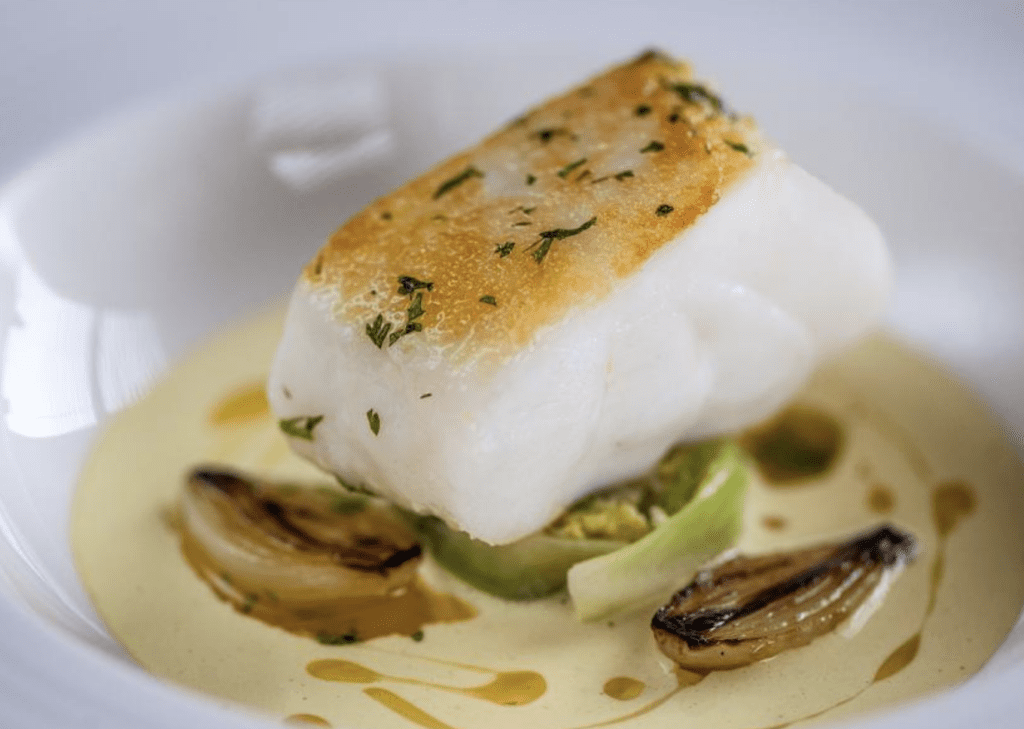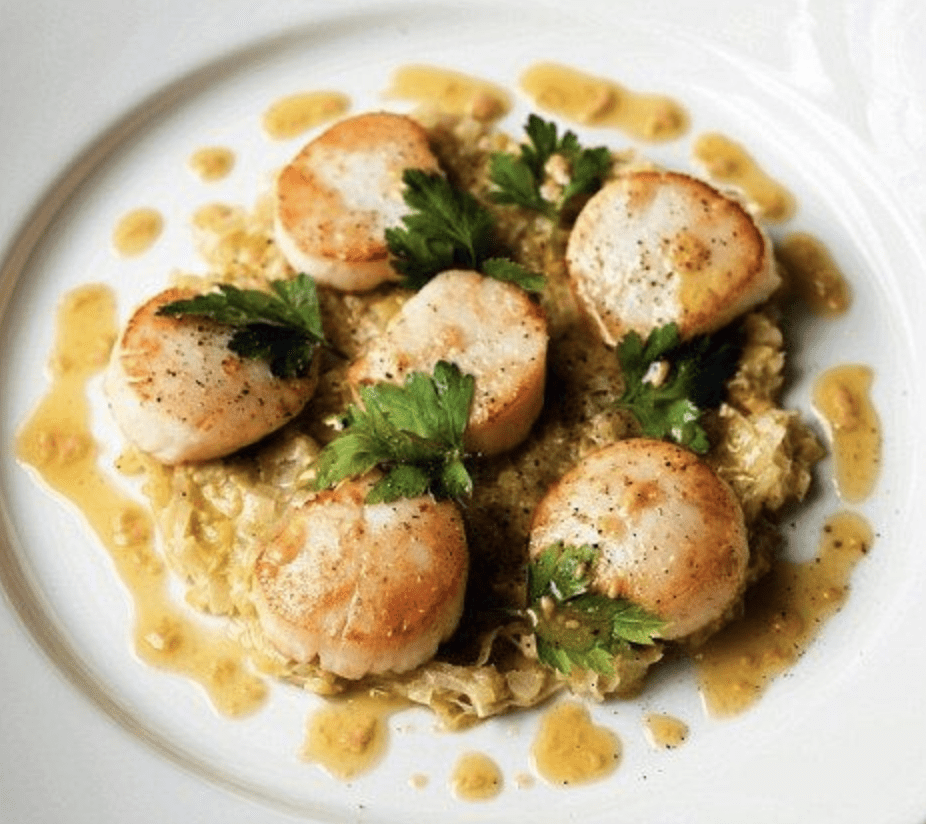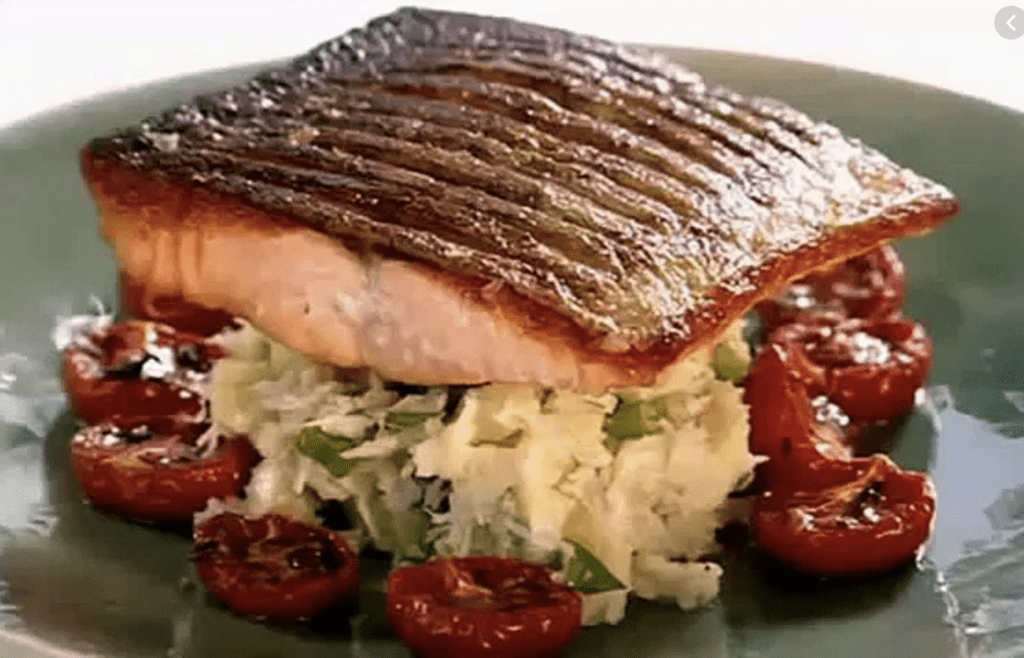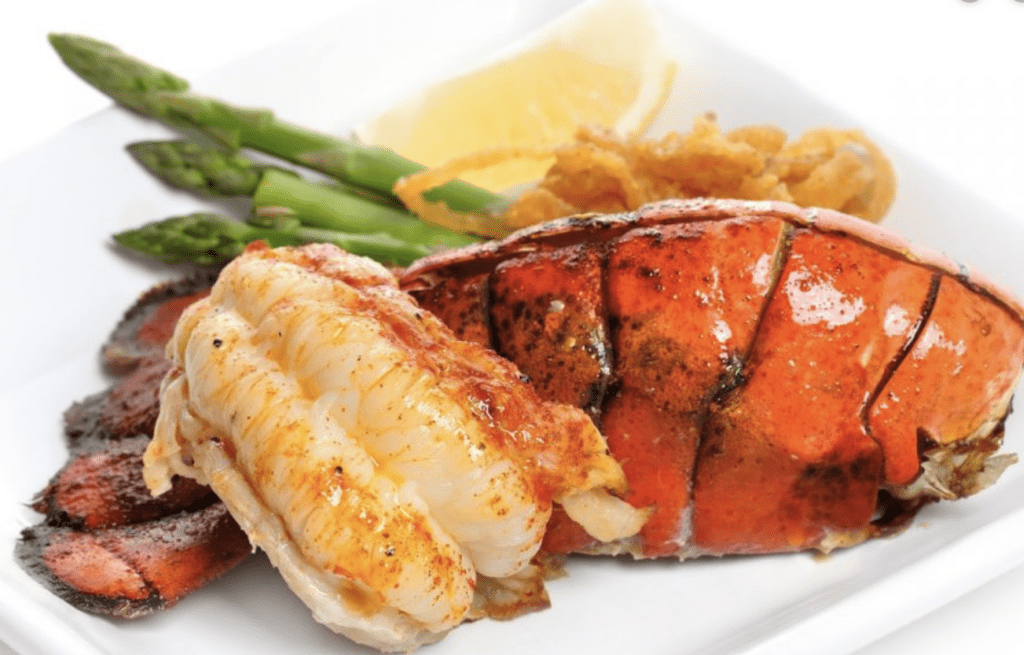Fish
Shell Fish Salmon Scallops
Shell Fish, Salmon, Scallops – Crabs
There are several species of crab that are commercially important in the US: Total commercial landings of all crab species in the US over the past decade have ranged from 275 to 350 million pounds per year with an annual dockside value between $400 and $550 million. The most popular crabs are King and Snow crab caught in Alaska, Dungeness crab caught along the West coast and Alaska, and Blue crab caught along much of the Eastern seaboard and the Gulf of Mexico.
Specifically, the blue crab fishery is the largest crab fishery in the US. Dungeness crab is the second largest crab fishery followed by Dungeness crabs which are caught along much of the U.S. Pacific coast and a large portion of the catch is from Oregon and is the state’s most valuable single-species fishery. King and snow crabs are highly valued commercial species mainly caught in Alaska.

Blue Crabs
Blue crab is the largest crab fishery in the US.
Blue crab the mainly harvested in coastal bays and estuaries along much of the Atlantic coast and the Gulf of Mexico.
Blue crabs are important to areas like the Chesapeake Bay because of their ecological, economical and historical value.
Snow (Tanner) Crabs
Snow crabs are fished at ocean depths of 240 to 600 feet.
Snow crabs can live up to 20 years.
Snow crabs are only found in the Bering and Chukchi Seas in Alaska.
Dungeness Crabs
Dungeness crabs can live over 8 years and can reach a size of 9 inches across the shell
Dungeness crabs are named after a small fishing village on the Strait of Juan de Fuca in Washington State.
Commercial crab pots are placed at depths of 30 to 600 feet and most of the harvest occurs from December through February.
King Crabs
King crabs are mainly found in Bristol Bay and in the Aleutian Islands in Alaska.
King crab is one of the most valuable seafood products harvested in the U.S.
The largest king crab on record had a leg span of nearly 5-feet across.
Shell Fish, Salmon, Scallops – Shrimp
There are numerous species of shrimp which can be collectively sold under the single term – shrimp. Occasionally they are sold as prawns, which is a term that refers to larger varieties that are more common in certain international markets.
There are a variety of different types and sources of shrimp available in U.S. markets.
Cold water shrimp are the smaller varieties harvested in ocean waters in the northwest and northeast regions of the US and Canada. Cold water shrimp are only available previously cooked and peeled (shell removed).
Warm water shrimp are harvested and farmed in tropical and sub-tropical regions around the world. They are more commonly sold by reference to basic shell colors (white, brown and pink shrimp) and there are variations in taste, texture, size and costs .
Wild shrimp refers to either cold water or warm water varieties that are harvested from coastal ocean waters with traditional vessels. They are often preferred for traditional flavors and recipes. The harvesting of wild shrimp is regulated by management programs that set annual production limits. Less than 10% of the shrimp eaten in the United Sates comes from wild harvests.
Farmed shrimp refers to warm water varieties that are grown in open and closed pond systems supplemented with formulated feeds. Shrimp diets and pond waters can be controlled to influence production rates and sensory attributes of the shrimp. Over 90% of the shrimp eaten in the United States come from farmed sources grown in other countries around the world.
Domestic shrimp is a term used to refer to wild shrimp harvested about the coasts of the US.
Imported shrimp refers mainly to farm-raised shrimp from productive regions in China, Thailand and many other Asian nations, and the Gulf of Mexico and Pacific coasts of Central and South America.
Shell Fish, Salmon, Scallops – Lobster
There are 2 distinct lobster fisheries in the US, the American lobster off the coast of New England and Eastern Canada, and the spiny lobster in the Florida Keys. In addition to U.S. lobster harvests, a large amount of northern lobsters are imported from Canada. The lobster’s habitat is rocky areas from just below the surface to depths of 2,300 feet – usually concentrated at depths of 130 feet. Lobsters molt as they age, and it is estimated the American lobster will molt over 20 times in 5 to 8 years before reaching the minimum size for commercial fishing.
The spiny lobster fishery lands approximately 4 to 6 million pounds annually. Most of the spiny lobster sold in the U.S. is imported. These lobsters can be found in dense vegetation as juveniles and eventually migrate to coral reefs as adults. Like American lobsters, the spiny lobsters will molt about 25 times in the first 5 to 7 years of life. The minimum size for commercial and recreational fisheries is 3 inches.
The U.S. exports most lobster mostly to Canada, followed by Italy, Spain and France. The U.S. and Canada are the major suppliers of lobster in the world.
American Lobster
American lobster is also known as New England or Northern lobster.
Lobsters are found in colder waters off of the New England coast
The American lobster is one of the most valuable fisheries in the United States.
The Northern lobsters’ lifespan is thought to exceed 50 years.
The largest American lobster on record weighed 44 pounds.
Spiny Lobster
Spiny lobster is also known as Caribbean lobster.
Spiny lobsters live in warm waters, and the main U.S fishery is in the Florida Keys.
Frozen lobster tails in U.S. markets are usually spiny lobster.
Spiny lobsters can grow to 3 feet or more.
Shell Fish, Salmon, Scallops – Salmon
The term “salmon” refers to a variety of species that are all “anadromous” fish, which means they are born in fresh water rivers and streams, migrate to the ocean to mature and spend much of their adult life, and then return to the streams and rivers in which they were born to spawn (reproduce) and then die. 6 types of salmon are consumed in the United States including: Atlantic, Chinook, Chum, Coho, Pink, and Sockeye Salmon. Of these, five species (Chinook, Chum, Coho, Pink and Sockeye) are harvested from wild fisheries in the Pacific Ocean and one type, Atlantic salmon, is primarily farmed raised.
Salmon has been the third most frequently consumed seafood product in the U.S. Average consumption has consistently been around 2 pounds per person per year, surpassed only by shrimp and canned tuna. Two-thirds of the salmon consumed in the US is farmed and imported primarily from Norway, Chile and Canada. U.S. commercial landings of salmon were 1 billion pounds valued at $688 million—an increase of 447 million pounds (80%) and almost $268 million (64%) compared with 2016. Alaska accounted for nearly 98& of total landings; Washington, 2%; California, Oregon, and the Great Lakes accounted for less than 1% of the catch. Sockeye salmon landings were 292 million pounds valued at $324 million—an increase of over 4 million pounds (2%) and $74 million (more than 29%) compared with 2016. Chinook salmon landings decreased to 9 million pounds—down 3 million pounds (over 24%) from 2016. Pink salmon landings were 495 million pounds—an increase of 365 million (280%); chum salmon landings were 177 million—an increase of nearly 75.8 million (75%); and coho salmon increased to 35 million—an increase of nearly 5 million (16%) compared with 2016.

Atlantic Salmon
The majority of salmon currently consumed in the U.S. is farm raised Atlantic salmon from Canada, Chile and Norway.
Farmed Atlantic salmon is primarily sold as fresh or frozen dressed fish, fillets or steaks.
Commercial fishing for wild Atlantic salmon is prohibited in the U.S. because wild population levels in the eastern U.S. are extremely low.
Pink Salmon
Almost all the pink salmon harvested in the United States comes from Alaska fisheries with some lesser amounts landed in Washington, and Oregon.
Pink salmon is often sold as a canned product.
Sockeye Salmon
Sockeye salmon is caught by U.S. fishermen, mainly in Alaskan waters.
Sockeye salmon is sold fresh, frozen and canned.
Chum Salmon
Chum salmon are primarily harvested by U.S. fishermen in Alaska.
Wild fish populations in Alaska are supported by the release of hatchery raised fish.
Chum salmon are sold fresh, frozen and canned.
Coho Salmon
Most Coho salmon is caught in Alaskan waters, and some is imported from Canada and Chile.
Most Coho salmon is sold fresh or frozen.
Chinook (King) Salmon
Chinook salmon are commercially harvested in Alaska, Washington, Oregon and in small amounts off the California coast.
Most Chinook salmon is sold fresh or frozen.
Shell Fish, Salmon, Scallops – Scallops
Scallops are one of the most popular seafood items due to their unique appealing texture and succulent flavors. Scallops have been among the top ten seafood items consumed in the U.S. for decades, and Americans eat about one third pound of scallops per year.
There are several types of scallops harvested in North America including the sea scallop, bay scallop and calico scallop. Several types of wild and farm raised scallops are also imported from Japan, China and Europe.
Scallops are available as fresh refrigerated meats or frozen meats. Size categories refer to the size of the adductor muscle (scallop meats) which is the main edible portion of the scallop. Scallop size categories can be simply grouped as large, medium and small. There are no enforced grade designations for scallop size.
Scallop adductor muscle has a tendency to absorb water when removed from the shell. Likewise, the meats can lose moisture when thawed or stored in refrigeration for some time. For the larger varieties, buyers can specify a purchase for ‘dry’ or ‘wet’ scallops, which refers to prior processing procedures that can influence the moisture content in the scallop. Wet scallops may be treated during processing to retain moisture. Dry scallops are not treated.
PAN-FRIED SCALLOPS WITH CRUNCHY APPLE SALAD >>
Gordon Ramsay Restaurants – Fish Recipes
Fish Recipes from Gordon Ramsay Restaurants
California Fried Scallops With Crunchy Apple Salad >>
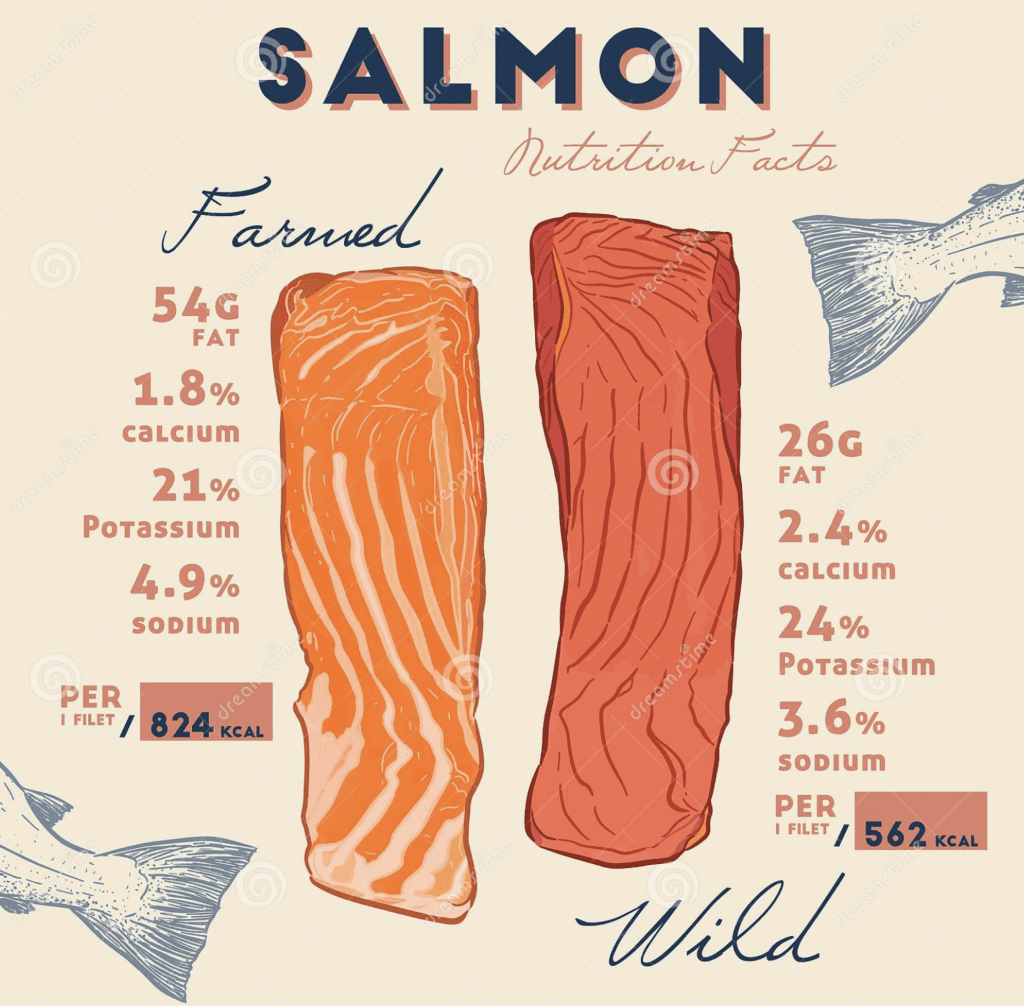
Salmon is White and Pink
Farm-raised salmon is naturally white and then dyed pink. While wild salmon are naturally pink due to the large amount of shrimp in their diet, farm-raised salmon eat differently. In order to achieve that pleasing pink color, salmon farmers add carotenoids (plant pigments) to the fish feed to mimic the natural hue of wild salmon.
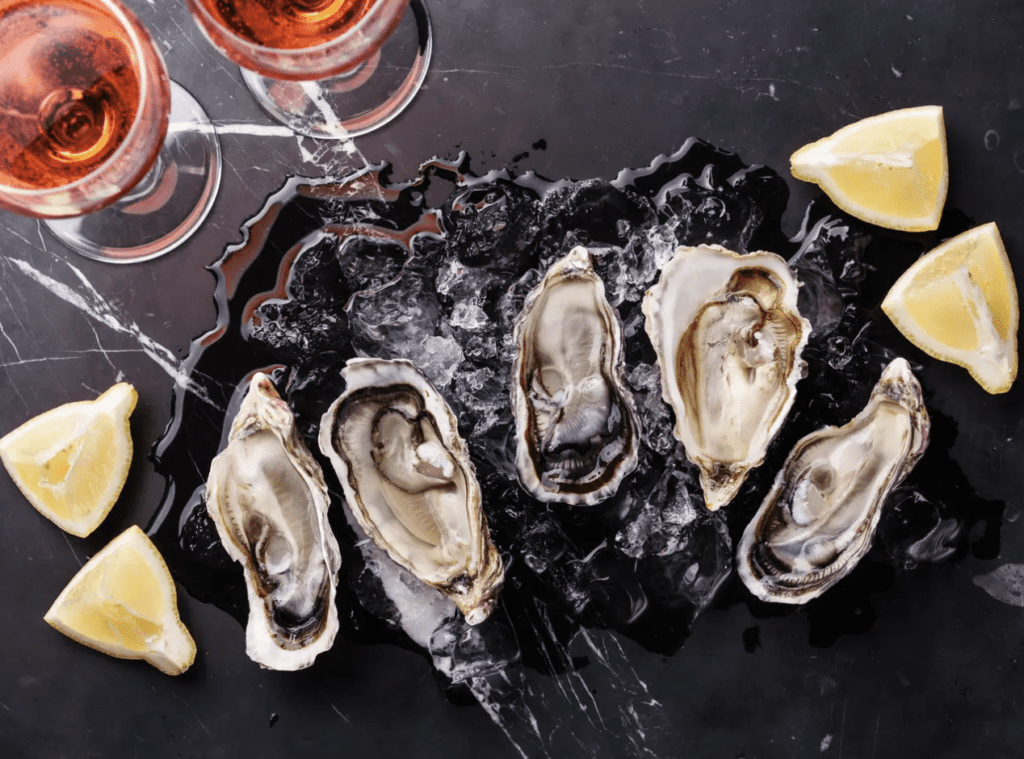
Raw Oysters Are Still Alive When You Eat Them
Chances are, raw oysters are still alive when you eat them. Oysters deteriorate so fast that chefs have to serve them very quickly — while they’re still alive, basically. Some varieties of the shellfish can survive out of the water for up to two weeks, which is why oysters are stored under particularly regulated condition. Once they die, they are no longer safe to eat.
If you have a plate of fresh oysters, you’re probably chewing on them while they are still alive. Luckily, oysters don’t have central nervous systems, so they can’t feel pain.
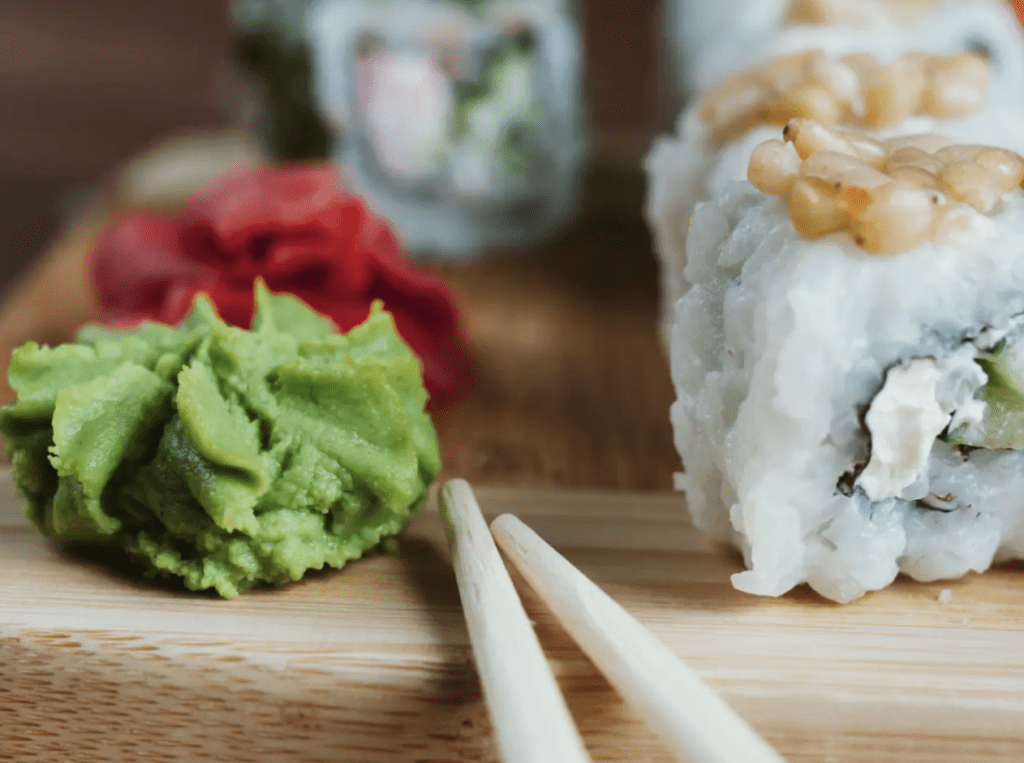
Most Wasabi is Actually Just Dyed Horseradish
If you have a habit of smearing spicy wasabi all over your California roll, just know that you are — in all likelihood — just eating dyed horseradish. About 99% of all wasabi sold in the United States is fake, and you’d have to go to a very high-end sushi restaurant in Japan to find the real stuff.
Wasabi costs $80 a pound, so it’s much more cost-effective for restaurants to just use an imitation instead.

